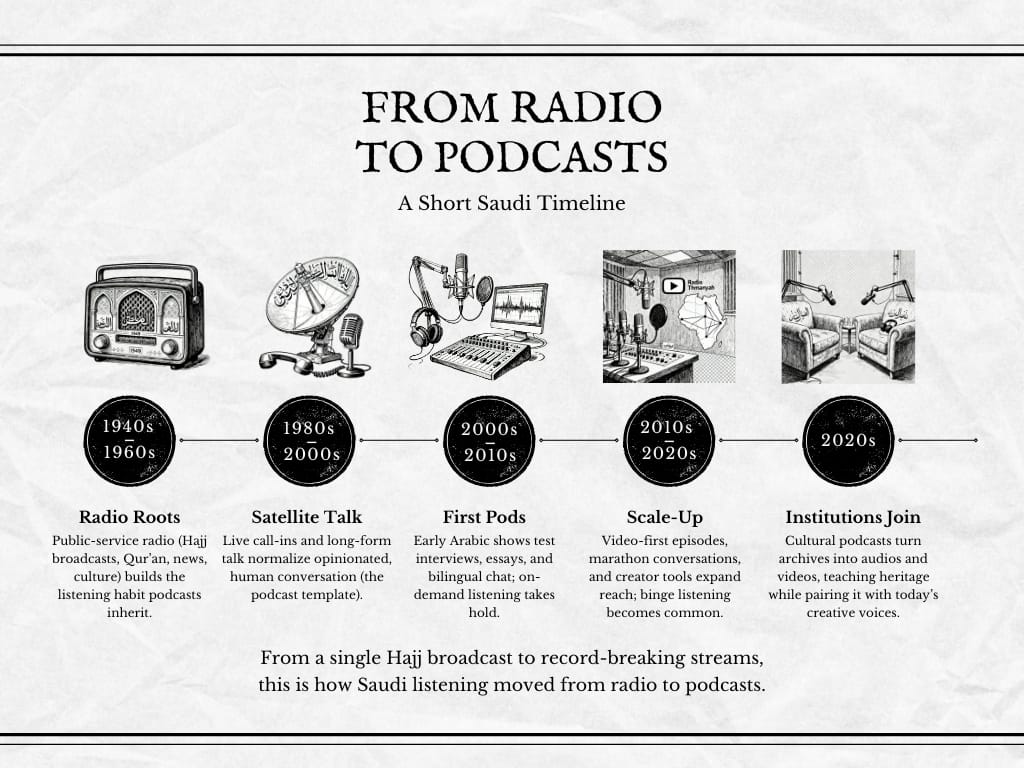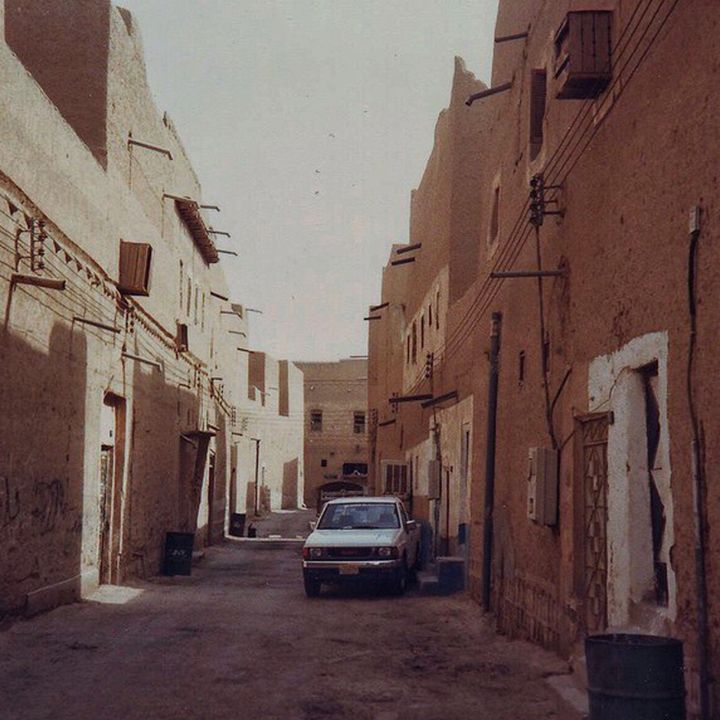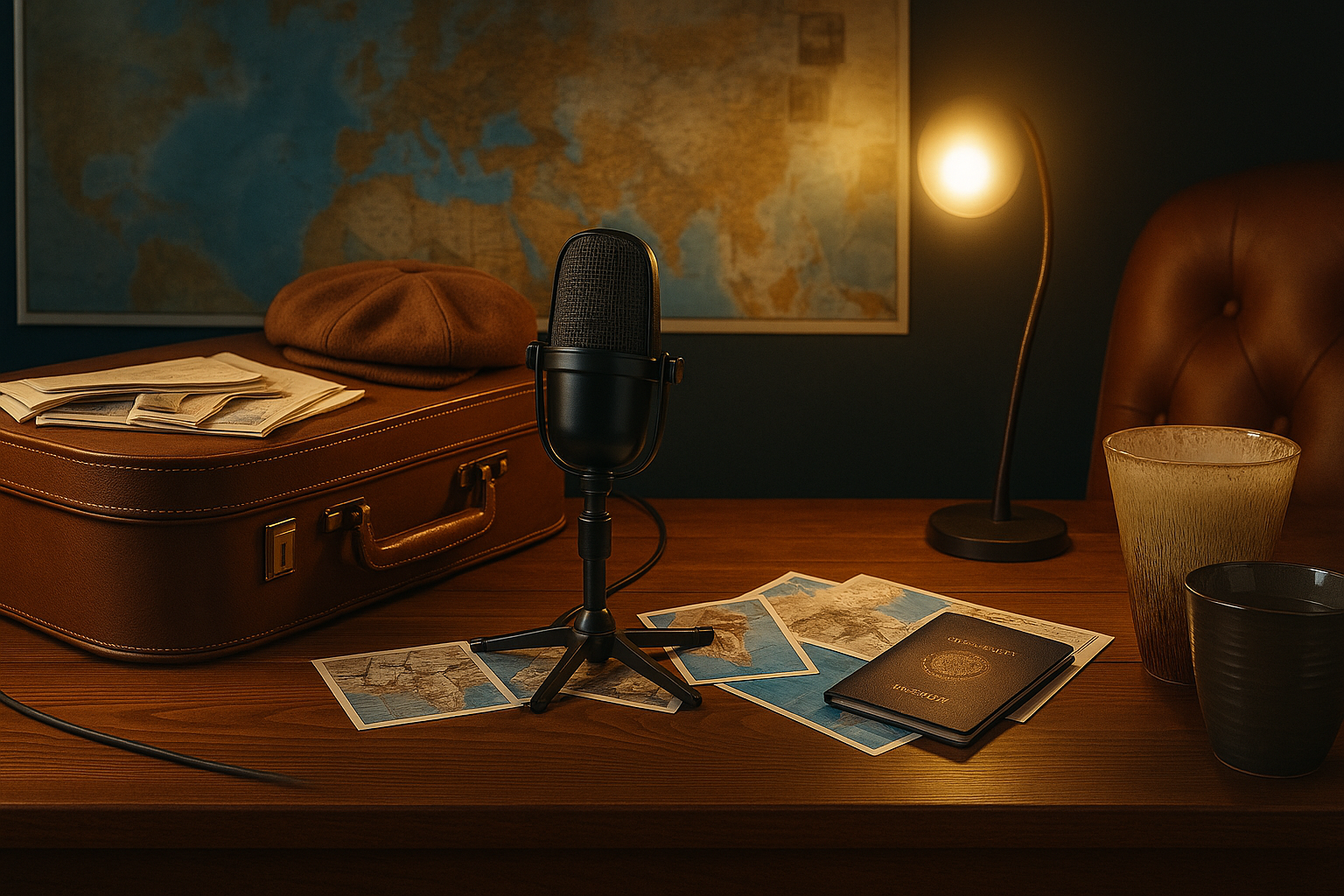In Saudi Arabia, storytelling is an ancient art. From the poetic recitations of Najd to the oral histories passed through generations in Hijaz, Saudis have always found ways to preserve memory and identity through voice. Today, that legacy is taking on a digital form: the podcast.
On headphones and home screens, a new generation of Saudi podcasters is redefining cultural storytelling. These voices are not just speaking to the Kingdom. They are reaching the world.
The Rise of Saudi Podcasts
Podcasting in Saudi Arabia has experienced rapid growth over the past decade. With a tech-savvy population and a hunger for culturally relevant content, Saudi Arabia has become one of the region's most dynamic podcast markets. Unlike traditional media, podcasts offer creators the freedom to explore diverse themes such as social life, heritage, language, identity, and entrepreneurship, without needing vast production budgets or formal broadcasting channels.
This freedom is exactly what makes podcasts a powerful tool for cultural export. In a world where audiences crave authenticity and nuance, Saudi podcasters are giving listeners around the globe an inside view of a country in cultural motion.

How Podcasts Are Exporting Saudi Culture
1. Speaking Beyond Borders with Bilingual Content
Some Saudi podcasts are produced entirely or partially in English. This opens the door to non-Arabic-speaking audiences who are curious about Saudi culture, politics, or society. Shows like The 966 and The Mo Show explore contemporary Saudi issues, from Vision 2030 to women’s empowerment, with a format familiar to international listeners.
2. Sharing the Modern Saudi Experience
Rather than focusing solely on history or folklore, many Saudi podcasts center on daily life, generational perspectives, or societal debates. This approach provides a living narrative of Saudi culture, showing how heritage interacts with modernity. It paints a picture of a dynamic society: complex, youthful, and evolving.
3. Government-Backed Cultural Storytelling
Even official institutions are embracing podcasting as a form of cultural diplomacy. The Saudi Ministry of Culture launched 1949, a podcast that brings together scholars, artists, and critics to explore Saudi heritage, cinema, and the arts. It’s a clear signal that the Kingdom sees podcasting as a modern channel for national storytelling.
4. Localizing Global Formats
Saudi podcasters are adapting globally popular podcast genres (interviews, investigative series, personal diaries) to suit local tastes and contexts. This "glocalization" helps make the content relatable for both local and global audiences, showing how Saudi culture can thrive in universal storytelling structures.
5. Amplifying Through Cross-Media Integration
Most Saudi podcasts are not confined to audio platforms. Creators use Twitter, Instagram, YouTube, and even TikTok to promote episodes, share highlights, and build community. This multiplatform strategy increases discoverability and ensures that cultural narratives reach both regional and international listeners.

6. Cultural Reflection and Critique
Saudi podcasts often include thoughtful discussions about identity, modern values, and the role of tradition. These conversations help frame Saudi culture as something active and reflective, not static or exotic. This makes the cultural export more robust, allowing listeners abroad to understand the diversity within the Kingdom.
Signs of Cultural Impact
Still, the signs of success are clear:
- Widespread engagement: 59% of Saudi adults listen to podcasts for at least one hour per week, making the Kingdom one of the most engaged podcast audiences globally.
- Youth-driven growth: 56% of Saudi podcast listeners are aged 25–34, reflecting the medium’s deep roots in young adult culture.
- Massive market trajectory: The Saudi podcasting industry was valued at USD 450.2 million in 2024 and is expected to reach over USD 2.56 billion by 2030.
- Infrastructure expansion: Podcast hosting infrastructure in Saudi Arabia was valued at USD 5.2 billion in 2023, with Riyadh emerging as a tech hub for the industry.
- Trusted medium: Saudi listeners report higher trust in podcast content than in radio or newspapers, and 5.1 million people in the country now tune in regularly, often using smartphones for on-the-go access.
What More Can Be Done?
To further enhance the global reach of Saudi podcasts:
- Encourage Bilingual Production: Supporting English or subtitled versions can dramatically expand reach.
- Create Podcast Funding Programs: Cultural institutions could offer grants for podcast series that showcase heritage or social themes.
- Train Creators in Global Standards: Workshops on storytelling, sound design, and digital marketing could help creators produce internationally competitive content.
- Promote Through Cultural Diplomacy Channels: Embassies, cultural attachés, and tourism boards could share podcast content as part of outreach efforts.
- Host Saudi Podcast Festivals: Events that bring together creators, sponsors, and audiences could build momentum and visibility.
A New Chapter in Oral Culture
In many ways, the rise of podcasting in Saudi Arabia is a return to roots. Oral storytelling, once practiced in tribal gatherings or village majlises, is now reaching global ears through streaming platforms. The tools are new, but the impulse is timeless.
Saudi podcasts are more than just entertainment. They are cultural bridges, narrative archives, and voices of a generation rewriting how the Kingdom is heard around the world.
Curious for more cultural stories like this?
Subscribe to Saudi Cultures for deep dives into traditions, regional stories, and voices from across the Kingdom.

